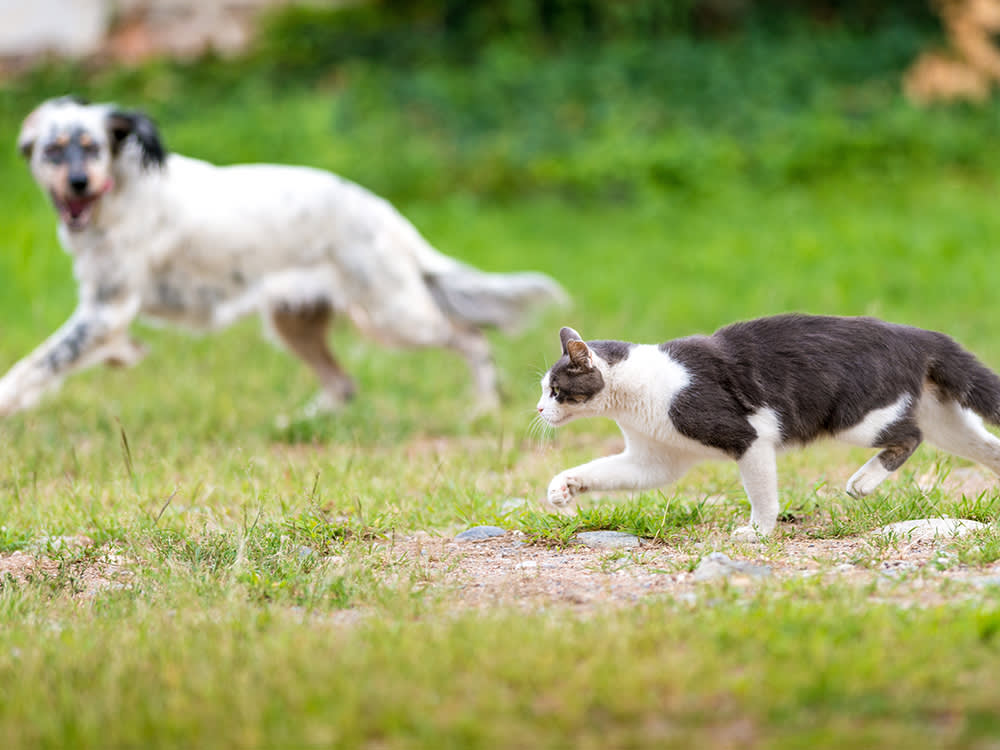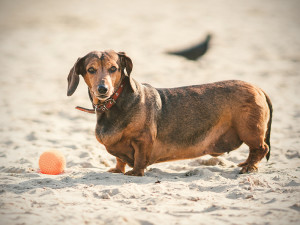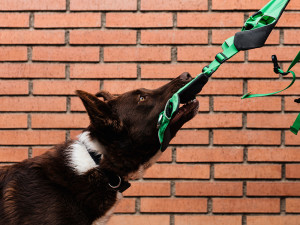Why Are Cats More Flexible Than Dogs?
We all have our talents.
In gym class growing up, were you the kid who looked at the sit-and-reach box for the Presidential Physical Fitness test and thought, “I’m so flexible, I can push that little slide-y thing right off,” or were you the kid whose muscles were barely springy enough to touch the stupid box in the first place? We all have our (literal) limits, and it’s no different for cats and dogs.
Have you ever thought about the athletic difference between dogs and cats? We already know that nutritional needs and personalities differ greatly between the two species, but what about their athletic prowess? We know they are both impressive runners, but how long can they go? How fast? As it turns out, it’s all about flexibility. There are some interesting anatomic differences between the two, and it starts with a little-known tendon in the neck called the nuchal ligament.
How Cats Are So Flexible
Cats, as we know, don’t hunt in packs, nor do they run their prey to exhaustion. Cats are solitary hunters and rely on stealth, explosive power and flexibility. From a sitting crouch, a cat can jump up to nine times their height, and in a split second, they can make sudden changes in direction and twist their spines mid-fall to land on all fours, according to Cornell Center for Materials Researchopens in new tab. It’s true: Cats almost always do land on their feet. Why can they do this?
A cat’s spine is much more flexible than that of a dog. Their vertebral bones have increased elasticity in the disc between bones when compared to a dog, which is why cats don’t have the back problems that dogs tend to have. A cat’s vertebrae is also less tightly connected than a dog’s, making the spine far more flexible, and a cat’s pelvis and shoulders are more loosely attached to its backbone than dogs.
How much do you spend on your pet per year?
A Big Physical Difference
The nuchal ligament attaches the head to the spine and is an adaptation designed to stabilize the head in animals that run fast and far. The nuchal ligament that dogs have is like the one that horses have. It supports the head without using muscles; it saves energy and makes the animal more efficient.
We also know dogs have historically relied upon a scent trail to hunt prey over long distances, while felines use hearing and eyesight to locate and hunt prey up close. “Dogs must follow their noses.”
As early dogs evolved longer legs, noses and necks, they needed the nuchal ligament to save energy while keeping their “nose to the ground” posture, run and follow scent trails over miles and miles. In Tedford Wang’s book Dogs: Their Fossil History and Evolutionary History, he shares that while dogs lost dexterity of their front limbs and evolved relatively weaker neck muscles needed to take down prey alone, they compensated by evolving group hunting techniques.
Dogs, humans, and horses have nuchal ligaments and are unique long-distance runners. You know who doesn’t have a nuchal ligament? Cats.
Are Dogs Or Cats Faster?
A cat can stretch their body and run with a stride that is three times their body length. A cat’s flexible spine, powerful muscles, and retractable/extendable claws that provide traction like runner’s spikes all contribute to top speeds of 30 miles per hour. There’s a reason the cheetah is the fastest animal in the world. However, a cat can only sustain this kind of anaerobic activity for very short periods of time, which makes a cat a fantastic sprinter but a terrible distance runner.
Some dogs, such as Greyhounds, have top speeds of 45 miles per hour, but they only have the ability to maintain that speed for short distances. Most dogs, though, are capable of a range closer to 15 to 20 miles per hour, depending on their size and breed. But, because dogs are marathon runners, most are capable of maintaining a long-distance jog that cats cannot (and honestly, being cats, choose not to).
The next time you see your dog or cat running, watch how they are different: Whether your companion animals are sprinting to pounce on a cat toy, jogging 10 miles with you, or prefer the strenuous athletic activity of couch surfing, all adult dogs and cats can benefit from daily exercise, a healthy weight, and a high-quality joint supplement.









